Assessment of OWID Population Data using excel forecast indicates Excess Deaths from 2020 to 2023 of 19.06 Million and Deficit Births of 16.7 Million; Some 35.8 million fewer people than expected.
Only Africa has rising births and deaths within expected range. These data are lower than Rancourt's likely more accurate computation of 30.9 M excess deaths from 2020 to 2022.
I have been watching OWID (Our World in Data) from time to time, waiting for their update of population data. The last last time I checked, a month or two ago, their data was only up to 2021. Today when I checked their data is complete up to 2023.
This data should be taken as indicative rather than absolute: I know for a fact that Philippines 2023 data is still incomplete. I wonder how much data is validated, and how much is modelled and estimated? This is ‘official’ data and there may be efforts to understate excess deaths and deficit births. I have not checked the source data to draw any conclusion on this. Regardless, assessing reported births and deaths against expected, based on prior birth and death patterns, makes for an interesting exercise.
Number of deaths by region show a huge spike in 2020, even higher in 2021, and no return to prior levels in 2022 and 2023. There is a step change in deaths between 2019 and 2023, representing a world population with greatly increased susceptibility to death.
I plotted the OWID data, and input expected deaths for 2021 through to 2023 based on trending from 2010 to 2019 using excel forecast. This gives some indication of how far this data deviates from expected levels. I arrive at 19 million excess deaths between 2020 and 2023.
By year, 2021 had the worst excess death outcomes. However, excess deaths (higher than expected levels and with no sign of recovery back to prior levels) continue in 2022 and 2023.
Births also show concerning trending, with a big drop from prior levels starting in 2020. I consider that births should not have dropped so much in 2020; after all, a pregnancy takes 40 weeks, and most of the babies born in 2020 were conceived in 2019. Perhaps there are considerable late birth registrations pending; people did not register babies births due to lack of ability to travel under harsh lockdowns.
However, by 2022 and 2023, lockdowns had largely been lifted, and I would expect birth registrations capture to have returned to prior patterns.
Births for 2020 though to 2023 are running right at the bottom of the confidence interval range, well below the expected forecast.
By year. The red bars are births that would have been expected based on prior trending, but which didn’t happen.
The OWID data has 6 regions represented. I broke down by region and applied excel forecast on the 2010 to 2019 data to arrive at expected births and deaths. When actual reported births and deaths are plotted, most regions show deaths well above, and births well below expected levels.
Oceana (Australasia (Australia and New Zealand), Melanesia, Micronesia, and Polynesia), has deaths well above expected levels and outside the CI, and births well below expectations up to 2023. This is congruent with Australian mortality data I have been monitoring.
Latin America and Caribbean, and Northern America had high excess deaths, but these have returned within range in 2023, though without compensation for the mass excess of 2020 to 2022. Births are running just under the lower CI range.
Northern America had high excess deaths in 2020 through to 2022, but with births below expected range only in 2020 (birth registration challenges?).
Europe had high excess deaths from 2020, but apparently returning within range (though without recovery for excess), and with births dropping particularly in 2022 and 2023. Europe was a mixed bag with respect to C19 injectables uptake; some countries with very high uptake, others very low.
Asia has done poorly. Excess deaths of 10.1 million from 2020 through to 2023, and with deaths continuing well above expected range. Births are running just below the lower CI range.
Africa stands out as globally exceptional! From OWID data, it did experience excess deaths from 2020 through to 2022, but deaths returned close to the expected range in 2023. Birth ran at the top of the expected forecast range throughout the pandemic years. Africa has fared far better than many other regions! Africa had high index of suspicion against the Covid-19 injectables and thus generally low uptake.
Rancourt’s just published meticulously researched paper calculated excess deaths of 30.9 ± 0.2 million, projected to have occurred globally for the 3-year period 2020-2022, from all causes. He concludes these deaths were not covid-19 deaths but were the results of:
Biological (including psychological) stress from mandates such as lockdowns and associated socio-economic structural changes
Non-COVID-19-vaccine medical interventions such as mechanical ventilators and drugs (including denial of treatment with antibiotics)
COVID-19 vaccine injection rollouts, including repeated rollouts on the same populations.
The OWID data derives a far lower, but no less devastating, figure of about 19 million excess deaths for 2020 to 2023.
Whether the excess deaths are 19 million or 30 million, or some equally inconceivably huge number, data from various sources still indicate that there was an abject failure of public health, and slaughter of people before their time. Excess deaths continue!
If the current deaths and births trending continues, population decline could possibly become reality within 20 years! If there is acceleration of deaths and falling births, 0 and then negative population growth may come sooner. This would necessitate desettlement, such as is already happening in Japan and surely other places. Interesting years ahead!





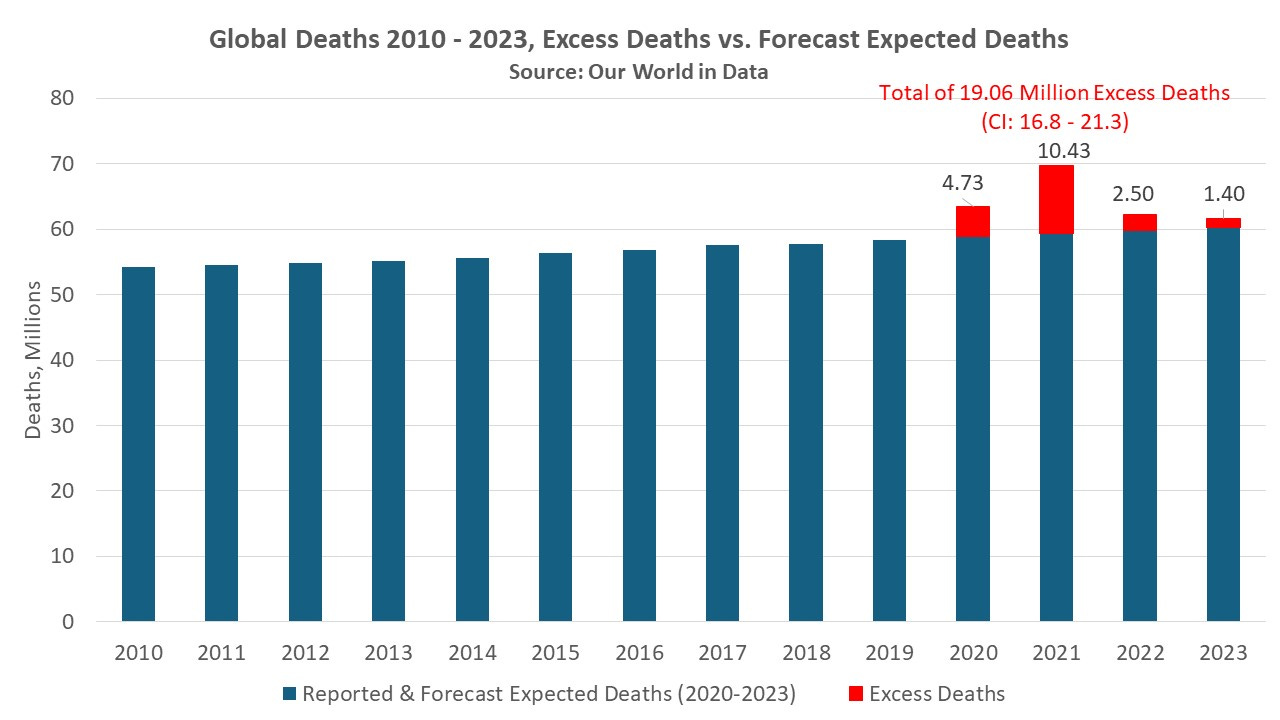

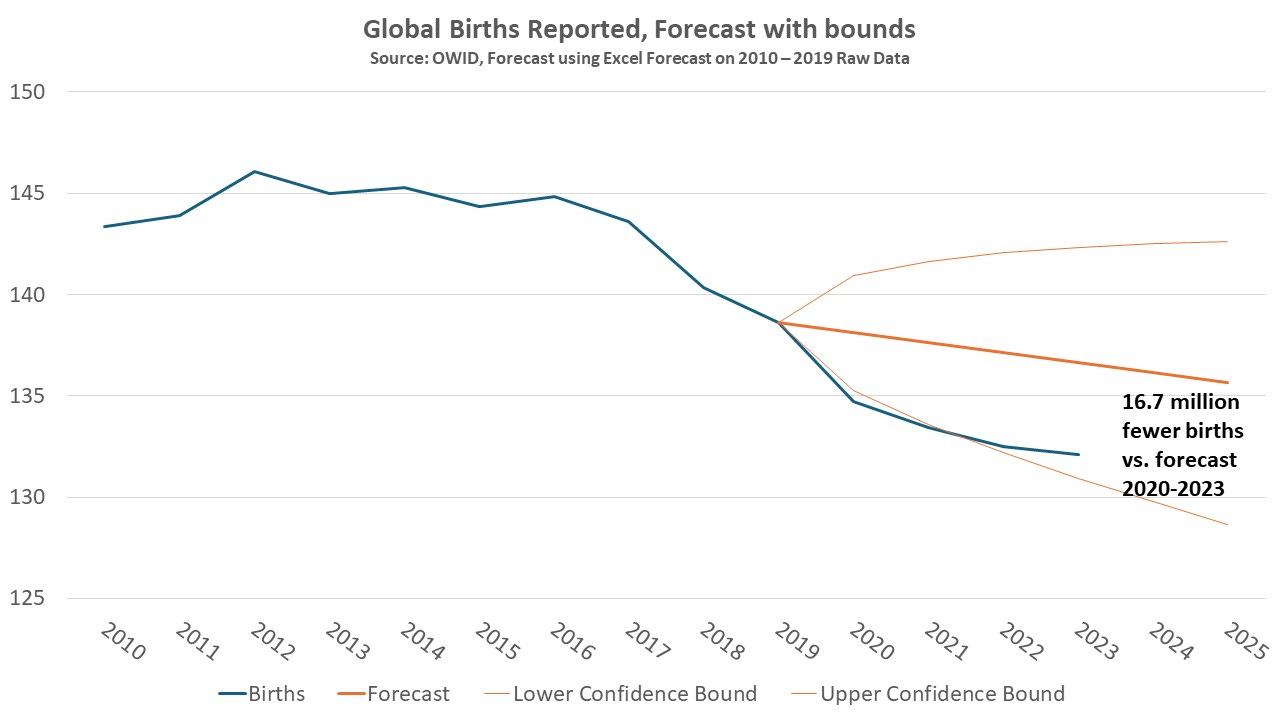
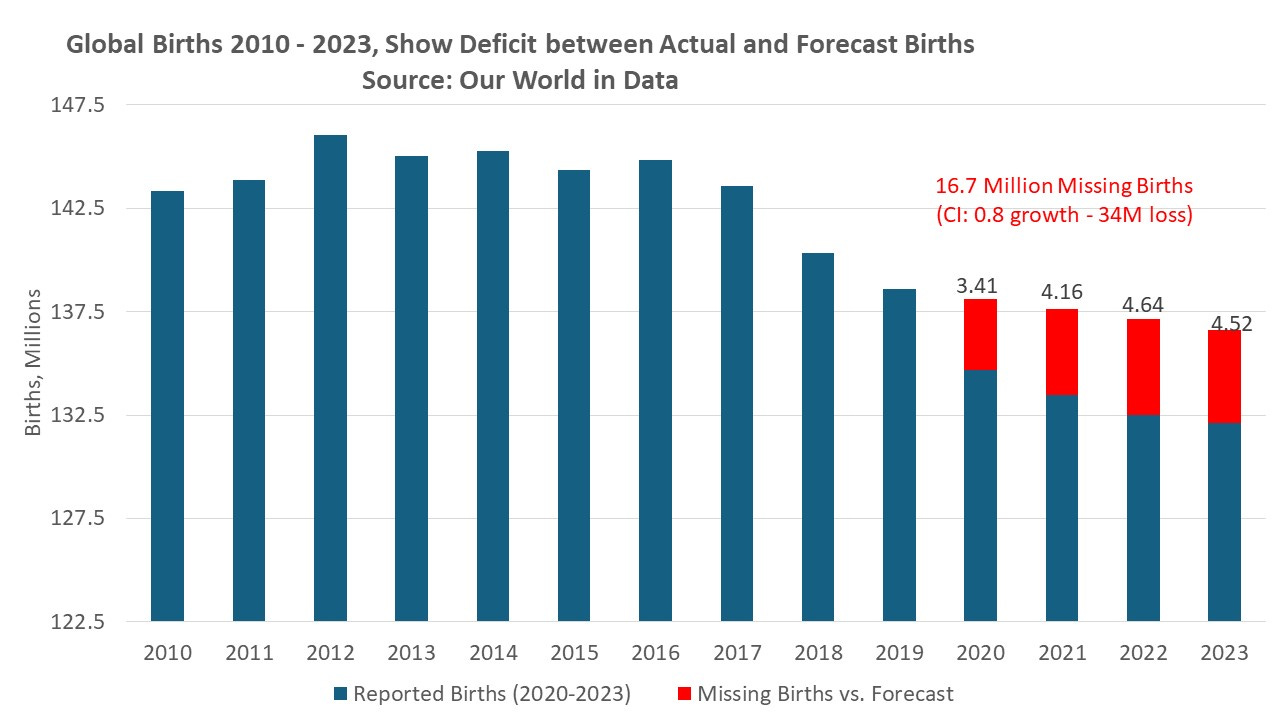



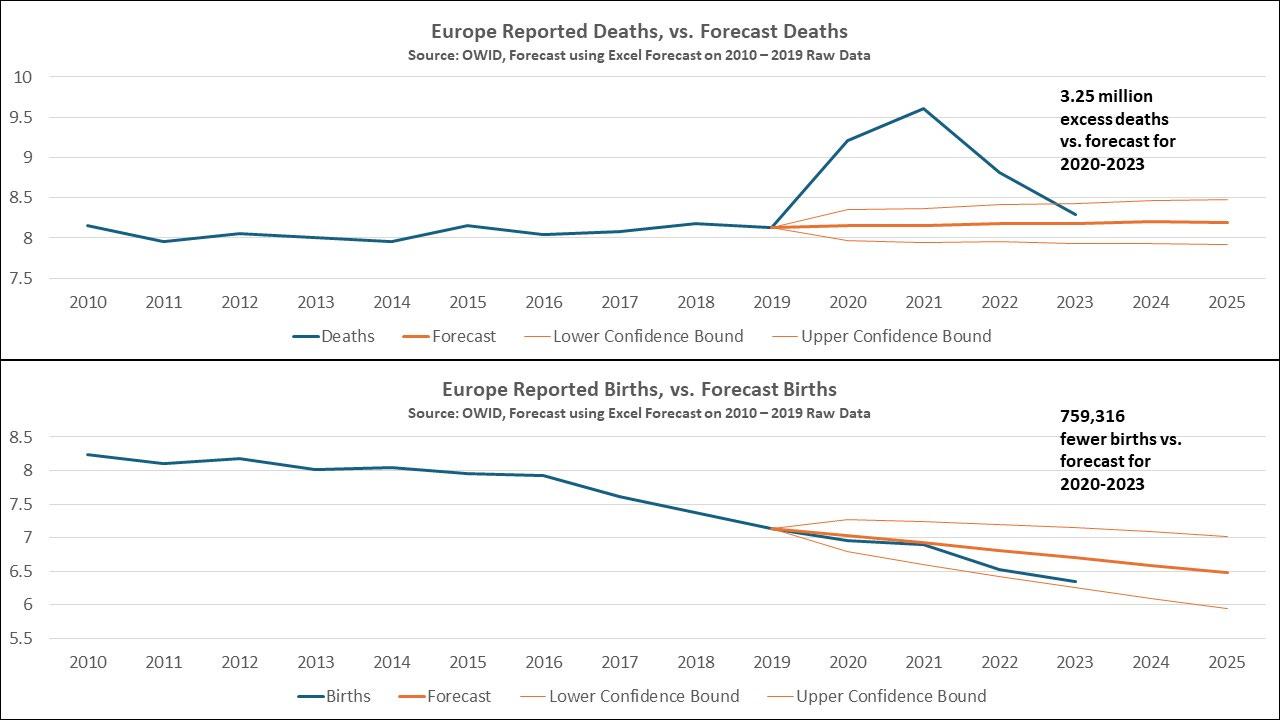
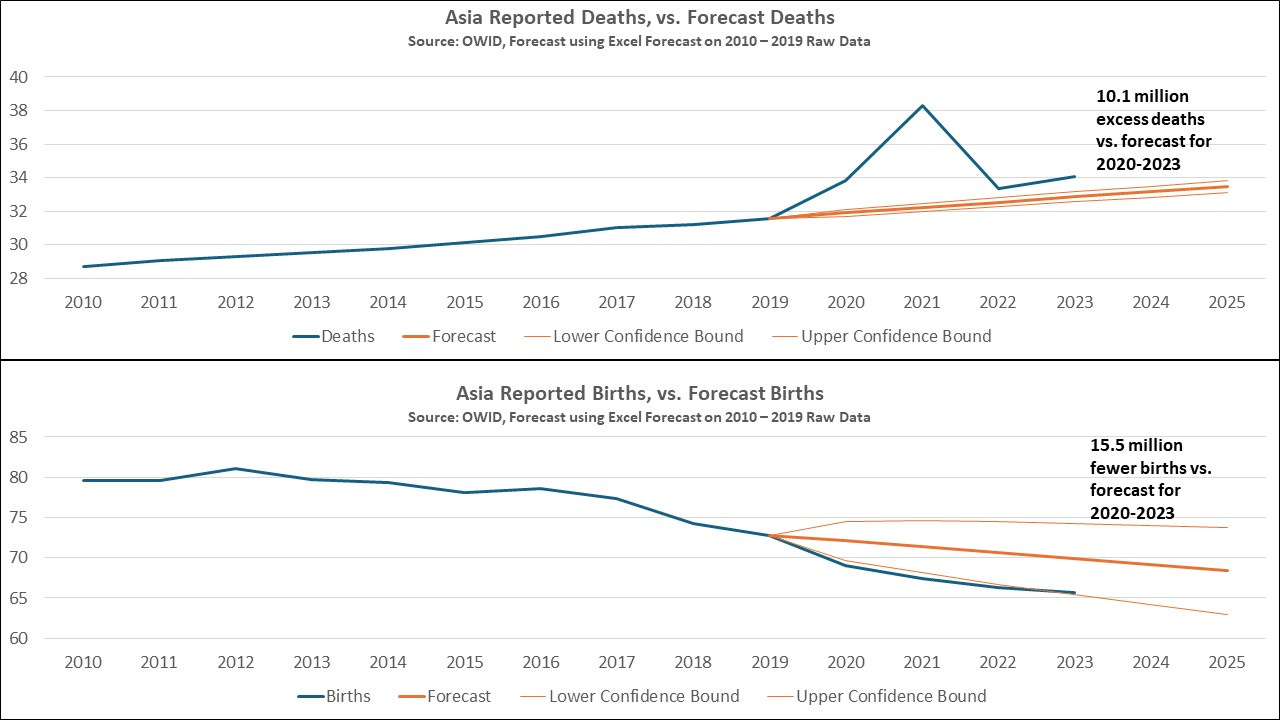
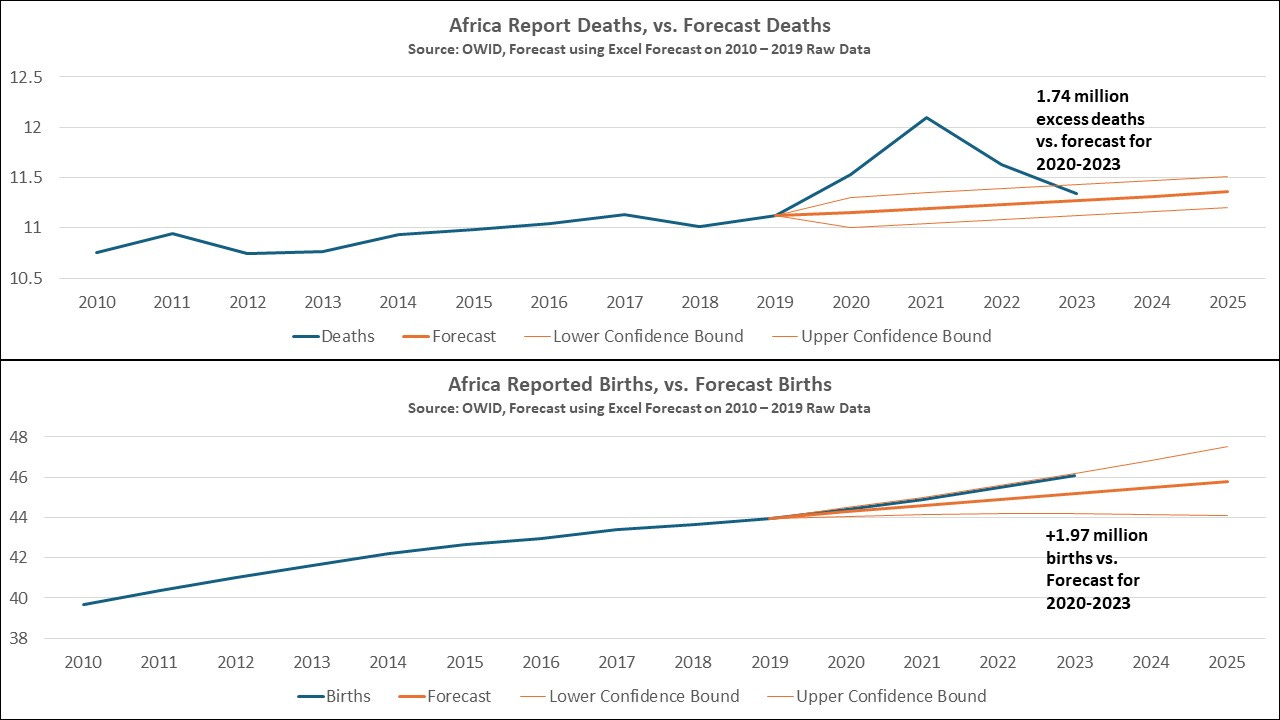


Who is OWID? Does everyone know the acronyms?
WOW😳